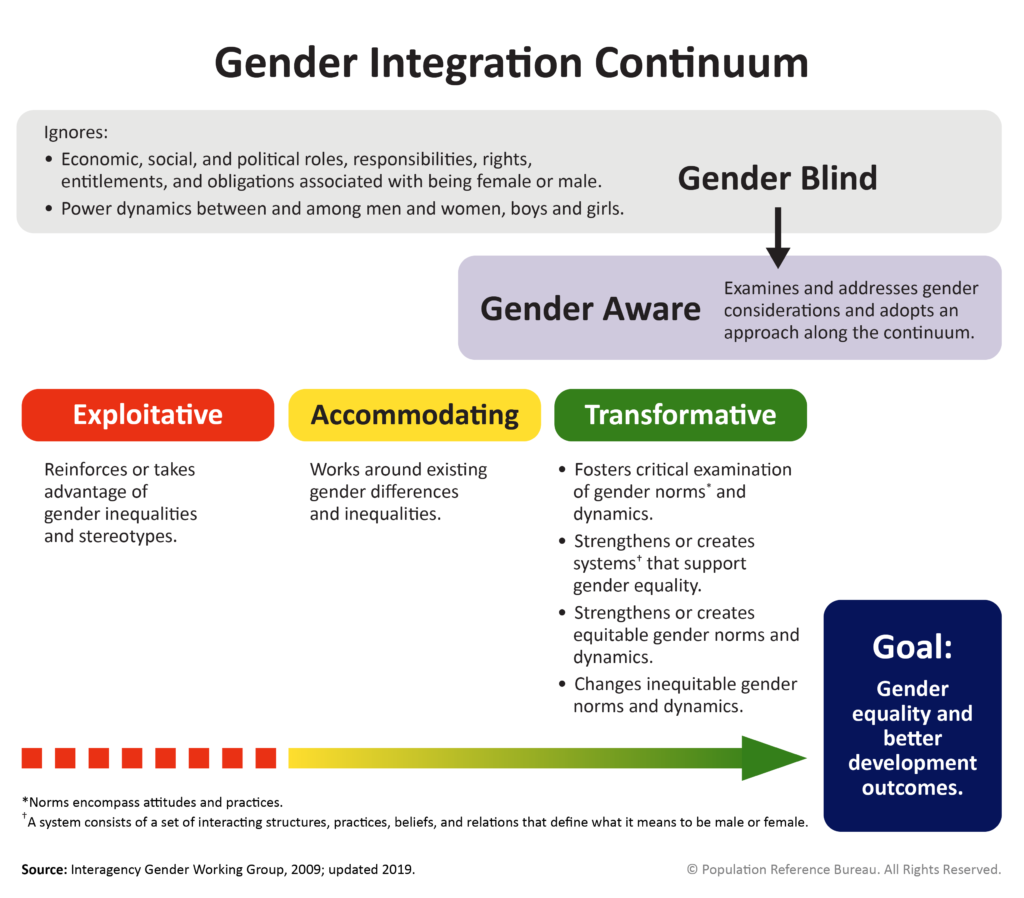Constructive Male Engagement in Family Planning
This interactive infographic introduces the idea of constructive male engagement and a framework for involving men in reproductive health in three ways.
Our training materials can be used to introduce a broad range of audiences and backgrounds to important concepts related to gender and health. Each training course focuses on one of five themes that complement the CORE Gender 101 agenda: Gender Integration, HIV + Sexuality, Safe Motherhood, Gender-Based Violence, and Constructive Male Engagement. The courses are designed to meet the geographic and technical needs of cooperating agencies, USAID Missions, and specific projects. Materials range from basics such as using a shared gender vocabulary and programmatic guidance, to user guides on how to conduct a gender analysis, to exercises for gender trainings. The trainings are geared to be used by anyone and with any audience, even those learning about gender for the first time!
Our popular Gender Integration Continuum framework is an important tool to assess how programs do (or do not) address gender and move them toward more gender-transformative actions. An updated User’s Guide for facilitating training on use of the continuum is available, along with other materials.
This interactive infographic introduces the idea of constructive male engagement and a framework for involving men in reproductive health in three ways.
This assessment guide was developed in response to the USG's establishment of institutional mandates and policies that emphasize the importance of promoting gender equality to achieve desired development outcomes. The objective of this guide is to enable USG and USAID partners to design, collect, use, and manage information on the linkages between gender inequality and health. (June 2013)
This assessment guide was developed in response to the USG's establishment of institutional mandates and policies that emphasize the importance of promoting gender equality to achieve desired development outcomes. The objective of this guide is to enable USG and USAID partners to design, collect, use, and manage information on the linkages between gender inequality and health.
This brief focuses on the motivations and mechanisms behind the increase of prenatal sex selection; outlines regions and countries that have skewed sex ratios at birth; and explores the negative social, economic, and development effects on individuals, communities, societies, and countries. While prenatal sex selection was once thought to be unique to India and China, it actually threatens all regions where these three phenomena are converging.

